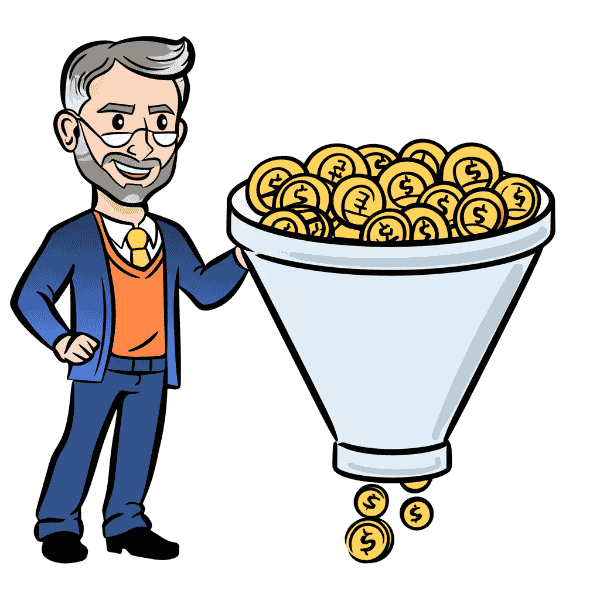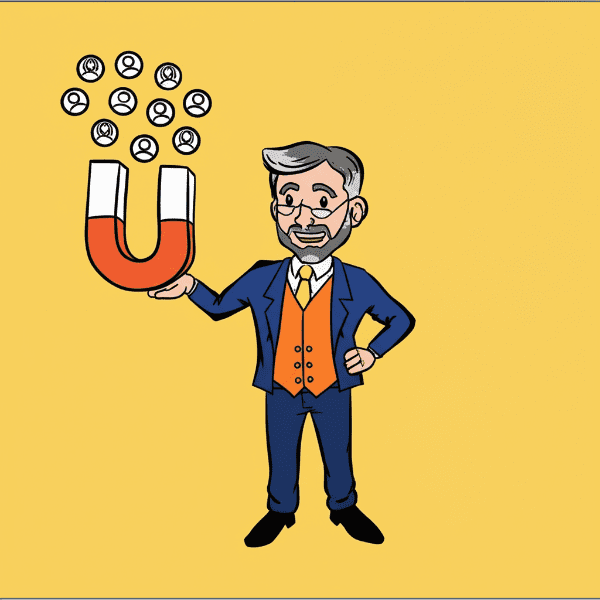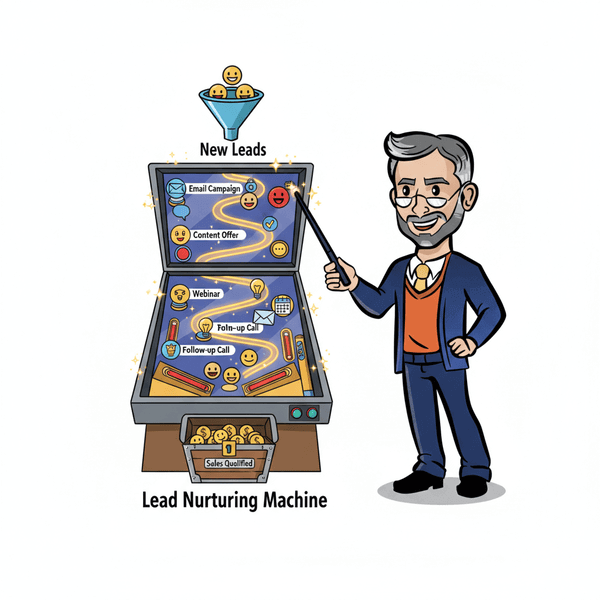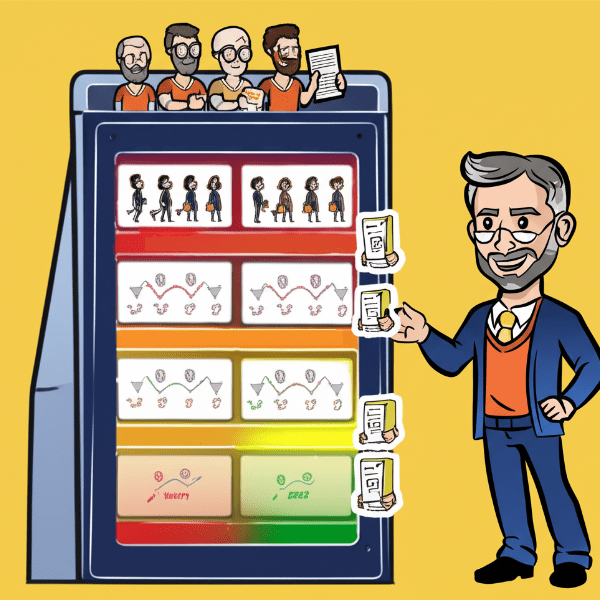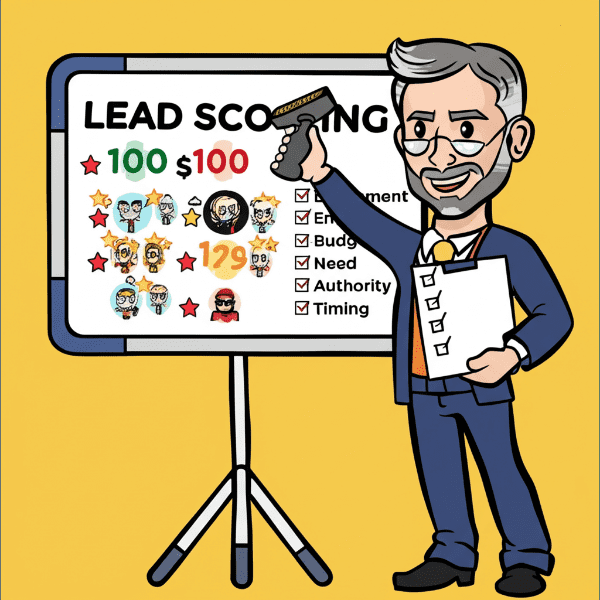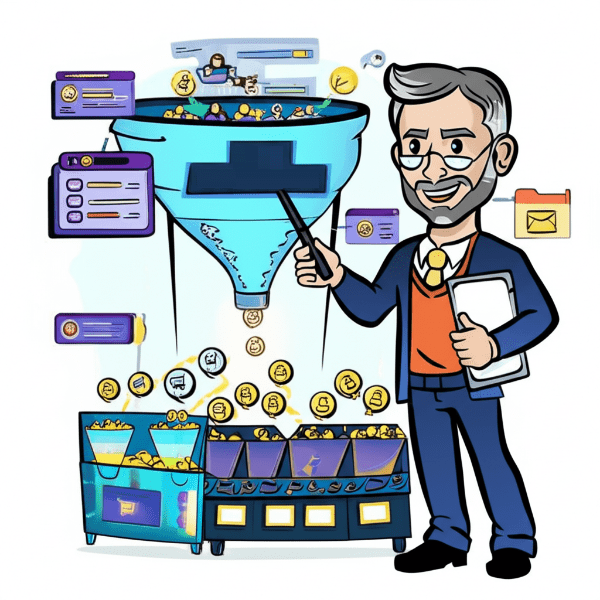Why a Lead Scoring Model Matters
Definition: A lead scoring model is a crucial component of any high-performing lead nurturing strategy. It allows sales and marketing teams to rank prospects based on their behavior, engagement, and demographic fit—helping prioritize outreach and personalize follow-ups.
By incorporating a well-structured lead scoring model into your lead nurturing efforts, you can focus your energy on the leads most likely to convert. This not only shortens sales cycles but also ensures you’re building relationships with the right people at the right time.
Use It In a Sentence: We revamped our lead nurturing campaigns after updating our lead scoring model to better reflect user engagement and intent.
Benefits of a Lead Scoring Model

- More Efficient Lead Nurturing: With a clear scoring system, your team can tailor messaging and touchpoints based on a lead’s interest level—moving warm leads through the funnel faster.
- Improved Sales and Marketing Alignment: Scoring models help define what makes a lead “sales-ready,” keeping both teams aligned on priorities and reducing friction over handoffs.
- Increased Conversion Rates: By focusing nurturing efforts on high-intent leads, you’re more likely to convert prospects into paying customers without wasting time or resources.
- Better Use of CRM Data: A solid lead scoring model helps clean and categorize CRM entries, making your lead nurturing efforts more targeted and effective.
- Scalable Growth: Startups and growth-focused businesses can scale more predictably with a lead scoring system that filters and prioritizes opportunities automatically.
Key Elements of a Lead Scoring Model
- Behavioral Indicators: Track how leads interact with your brand—email opens, page visits, downloads, demo requests—and assign scores accordingly.
- Demographic Fit: Assign higher scores to leads that match your ideal customer profile based on factors like industry, job title, or company size.
- Engagement Frequency: Leads that regularly engage with your emails or attend webinars should score higher than those who only visited your site once.
- Negative Scoring: Not all actions are positive. Unsubscribes, bounced emails, or lack of activity over time can lower a lead’s score and signal disinterest.
- Threshold-Based Triggers: When a lead crosses a certain score threshold, it can automatically trigger a shift in the lead nurturing strategy—such as moving them into a sales-qualified pipeline or initiating a direct outreach sequence.
- Ongoing Optimization: Just like your funnel, your lead scoring model should evolve. Regularly review and adjust scoring criteria based on real-world performance and feedback from sales.
More Definitions
(From the Sales & Marketing Jargon Encyclopedia)
- Qualified Lead: A prospect who meets certain criteria and demonstrates intent or potential to become a customer.
Read More> - Intent Data: Information showing a prospect’s online actions that signal purchase interest.
Read More> - Local SEO: Optimization is the process of improving your online presence to attract more business from local searches on search engines like Google.
Read More>
Useful Posts
(From the Sales Funnel Professor Blog)
- Top of Funnel: Organic Social Strategies: Learn how to build brand awareness using unpaid social media content and outreach.
Read More> - SEO Top of Funnel Strategies: Dive into organic tactics that increase visibility at the awareness stage without a paid budget.
Read More> - How to Find Low-Hanging Fruit in Sales & Marketing: Discover practical ways to identify quick wins and easy-to-implement strategies that don’t require a big spend.
Read More>










